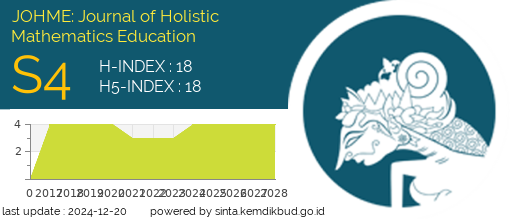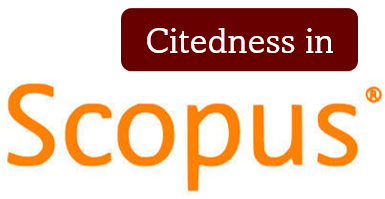The Role of Christian Teachers in Providing for the Needs of High-Achieving Students
DOI:
https://doi.org/10.19166/johme.v1i1.710Keywords:
Christian teachers, high-achieving students, students’ needs, guru Kristen, anak berprestasi tinggi, kebutuhan siswaAbstract
In every classroom, there are some students who perform better than their peers and are even very successful in most of their subjects. They are known as high-achieving students. They are grade conscious and sensitive to their teacher’s qualities. However, data from PISA 2012 shows that teachers in Indonesia cannot meet the needs of high-achieving students. High-achieving students tend to put high expectations on their teachers. From a Christian perspective, they study wholeheartedly and Christian teachers need to guide these high-achieving students so they can reach their maximum potential in a way that is pleasing to God. The purpose of this literature review is to examine what high-achieving students need from their teachers. There are five needs that high-achieving students need to have provided by their teachers: challenging assignments, self-acknowledgement, encouragement, opportunity to join in academic competitions, and learning community involvement. The responsibilities of teachers of high-achieving students should not stop with showing professionalism in meeting their expectations, but should include helping these students learn the right way of studying that is pleasing to God and not self-centered in achieving their own goals.
ABSTRAK BAHASA INDONESIA: Di setiap ruang kelas, terdapat siswa-siswa yang menunjukkan performa akademik yang lebih baik dari teman-temannya atau bahkan sangat berhasil dalam semua mata pelajaran. Mereka dikenal sebagai anak yang berprestasi tinggi. Mereka sangat peduli terhadap nilai dan sensitif terhadap kualitas guru. Namun, data dari PISA 2012 menunjukkan bahwa guru-guru di Indonesia tidak dapat memenuhi kebutuhan anak-anak yang berprestasi tinggi. Anak-anak yang berprestasi tinggi cenderung menaruh ekspektasi yang tinggi dari gurunya. Dari sudut pandang Kristiani, apa yang mereka lakukan adalah salah satu bentuk pertanggungjawaban iman untuk belajar dengan sepenuh hati dan guru Kristen perlu untuk membimbing anak berprestasi tinggi dalam mencapai potensi maksimal dari diri mereka di jalan yang berkenan di hadapan Tuhan. Tujuan dari kajian literatur ini adalah untuk menguji apa yang diperlukan oleh anak berprestasi tinggi dari guru mereka. Terdapat lima kebutuhan anak berprestasi tinggi yang perlu disediakan dari guru mereka; tugas yang menantang, pengakuan diri, dukungan, kesempatan untuk bergabung dan dukungan dalam kompetensi akademik, keterlibatan dari komunitas belajar. Tanggung jawab guru Kristen tidak hanya berhenti dalam menunjukkan profesionalitas untuk memenuhi ekspektasi mereka, tapi juga membawa mereka ke jalan yang benar dan berkenan bagi Tuhan dalam belajar yaitu dengan tidak menjadi berpusat hanya kepada diri sendiri dalam mencapai tujuan mereka.
References
Bala, R. (2014). Values and adjustment problems of high-achieving and low achievers. International Journal of Educational Planning & Administration, 4(2), 113-118.
Balduf, M. (2009). Underachievement among college students. Journal of Advance Academics, 20(2), 275-294. doi: https://doi.org/10.1177/1932202X0902000204
Bridges, J. (2009). Respectable sins: Confronting the sins we tolerate. Bandung, Indonesia: Penerbit Pionir Jiwa.
Buser, R. A., Stuck, D. L., & Casey, J. P. (1976). Teacher characteristics and behaviors preferred by high school students. Peabody Journal of Education, 51(2), 119-123. doi: https://doi.org/10.1080/01619567409537953
Csikszentmihalyi, M., Rathunde, K., & Whalen, S. (1996). Talented teenagers: The roots of success and failure. New York: Cambridge University Press.
Duffy, K. (2003). Failing Students: A qualitative study of factors that influence the decisions regarding assessment of students' competence in practice. Glasgow: Caledonian University.
Gagne, F. (2004). Transforming gifts into talents: The DMGT as a developmental theory. High Ability Studies, 15(2), 119-147. doi: https://doi.org/10.1080/1359813042000314718
Gawronski, D. A., & Mathis, C. (1965). Differences between over-achieving, normal achieving, and under-achieving high school students. Psychology in the Schools, 2(2): 152-155. doi: https://doi.org/10.1002/1520-6807(196504)2:2<152::aid-pits2310020214>3.0.co;2-q
Händel, M., Vialle, W., & Ziegler, A. (2013). Student perceptions of high-achieving classmates. Faculty of Social Sciences - Papers. High Ability Studies, 24(2), 1-32. doi: https://doi.org/10.1080/13598139.2013.843139
Heacox, D. (1991). Up from underachievement how teachers, students, and parents can work together to promote student success. Minneapolis, MN: Free Spirit Publishing Inc.
Jabeen, S., & Ahmad, M. (2013). A study on need achievement of high and low achievers. Journal of Education and Practice, 4(4), 225-235.
Karaduman, G. B. (2013). Underachievement in gifted students. International Journal on New Trends in Education and Their Implications, 4(4), 165-172.
Kuech, R., & Sanford, R. (2014). Academic competitions: Perceptions of learning benefits from a science bowl competition. European Scientific Journal, 1, 388-394.
Kuhn, D. (2007). How to produce a high-achieving child. The Phi Delta Kappan, 88(10), 757-763. doi: https://doi.org/10.1177/003172170708801012
Macaro, E., & Wingate, U. (2004). From sixth form to university: Motivation and transition among high achieving state-school language students. Oxford Review of Education, 30(4), 467-488. doi: https://doi.org/10.1080/0305498042000303964
McCoach, D. B, & Siegle, D. (2001). A comparison of high-achievers' and low achievers' attitudes, perceptions, and motivations. Academic Exchange Quarterly, 5(2), 71-76.
Monteiro, S., Almeida, L. S., & Vasconcelos, R. M. (2012). The role of teachers at university: What do high-achieving students look for? Journal of the Scholarship of Teaching & Learning, 12(2), 65-77.
Pazmiño, R. W. (2008). Foundational issues in Christian education: An introduction in evangelical perspective. Grand Rapids, MI: Baker Academic.
Porter, L. (2000). Student behavior: Theory and practice for teachers (2nd ed.). Crow's Nest, NSW, Australia: Allen & Unwin.
Renzulli, J. S., Gubbins, E. J., Siegle, D., Zhang, W., & Chen, C. (2005). Assumptions underlying the identification of gifted and talented students. Gifted Child Quarterly, 49(1), 68-79. doi: https://doi.org/10.1177/001698620504900107
Van Brummelen, H. (2009). Walking with God in the classroom: Christian approaches to learning and teaching (3rd ed.). Colorado Springs, CO: Purposeful Design Publication.
Williams, K., & Williams, C. (2011). Five key ingredients for improving student motivation. Research in Higher Education Journal, 11, 1-23.
Downloads
Published
How to Cite
Issue
Section
License
Authors who publish with this journal agree to the following terms:
1) Authors retain copyright and grant the journal right of first publication with the work simultaneously licensed under a Creative Commons Attribution License (CC-BY-SA 4.0) that allows others to share the work with an acknowledgement of the work's authorship and initial publication in this journal.
2) Authors are able to enter into separate, additional contractual arrangements for the non-exclusive distribution of the journal's published version of the work (e.g., post it to an institutional repository or publish it in a book), with an acknowledgement of its initial publication in this journal.
3) Authors are permitted and encouraged to post their work online (e.g., in institutional repositories or on their website). The final published PDF should be used and bibliographic details that credit the publication in this journal should be included.”










